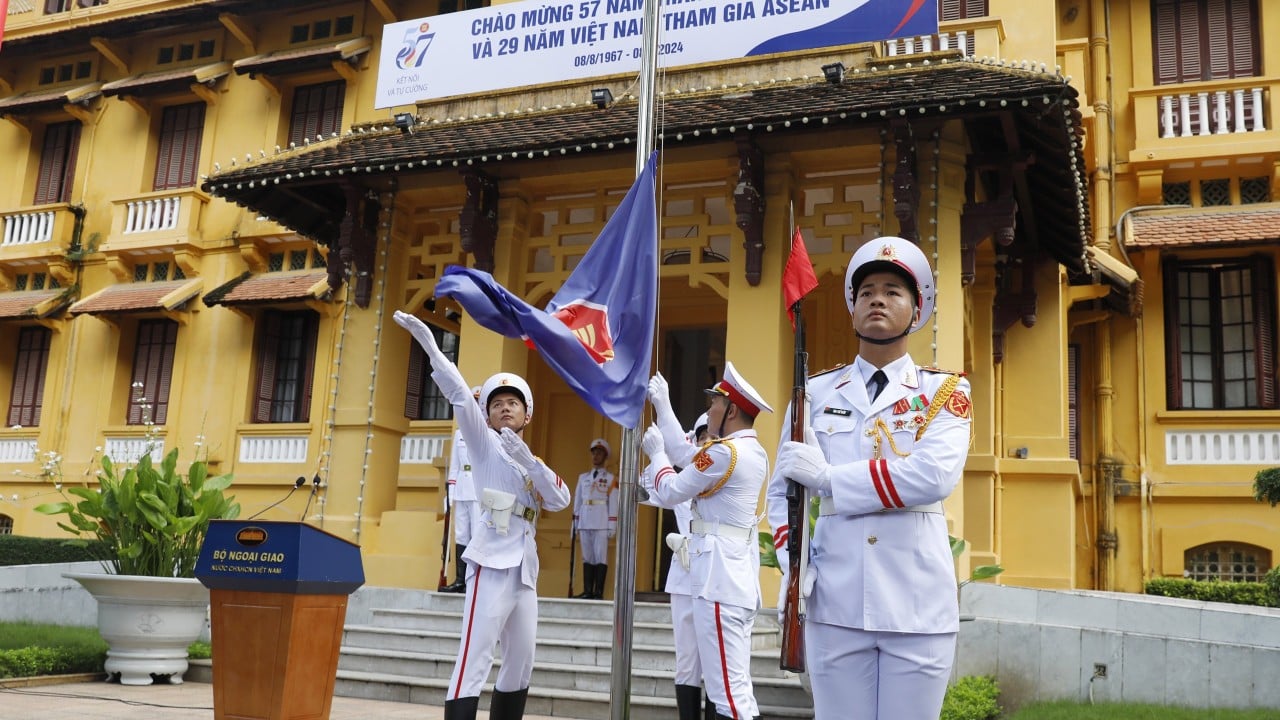When Vietnam’s newly-elected leader To Lam jetted off to Beijing last week, the political theatre was impossible to miss. As the cameras rolled, he deftly navigated the delicate dance between Hanoi and its economic juggernaut to the north, all while trying to advance his nation’s strategic interests across Southeast Asia.
It’s a high-wire act that Vietnam has perfected over decades – safeguarding robust trade ties with largest trading partner China while carving out valuable diplomatic space within the Asean regional bloc. And as tensions simmer in the South China Sea, Lam’s diplomatic juggling is more critical than ever.
“Asean has, to some extent, increased Vietnam’s diplomatic room for manoeuvring when dealing with China,” said Huong Le Thu, deputy director of the International Crisis Group’s Asia programme. “Vietnam’s initial hope was to set its territorial disputes with China in the context of a multilateral dispute” between Beijing and members of the Association of Southeast Asian Nations, she said.
That strategy was on full display earlier this month, as Vietnam’s coastguard conducted joint exercises with their Philippine counterparts for the first time in the contested waters. Analysts say the move was carefully calibrated to deepen ties with a fellow Asean claimant state, without crossing Beijing’s red lines.
“The drills were primarily focused on humanitarian efforts rather than military manoeuvres,” said academic Tran Thi Mong Tuyen, a foreign policy specialist at National Cheng Kung University. It was a diplomatic dance that allowed Hanoi to strengthen regional partnerships while adhering to its non-aligned “four nos” principle, Tran said.

“Vietnam’s policy remains uninfluenced by external forces, and it carefully balances diverse interests under this framework. While Vietnam is cautious in its approach, this should not be mistaken for weakness.”
Vietnam’s trade with Asean soared in the two decades after it secured membership of the bloc – with exports rising sevenfold from US$5.8 billion in 1996 to US$41.49 billion in 2016 – helping advance Hanoi’s economic goals.
“For Vietnam – a socialist country moving towards a market-led economy – cooperation in the context of the Asean Economic Community has been a valuable learning experience,” the International Crisis Group’s Le Thu said.
Vietnam’s active involvement in Asean’s trade, investment, and financial integration has allowed it to wield increasing diplomatic sway within the bloc – particularly among neighbours feeling the pull of China’s economic gravitational force.
In recent years, Hanoi has focused on bolstering ties with two of these in particular: Cambodia and Laos. “Vietnam was the largest investor in both countries before being overtaken by China,” Le Thu said.

As Vietnam has solidified its influence within Asean, it has also leveraged the regional bloc to expand its global economic partnerships in strategic ways.
“Asean and its various economic initiatives have really helped prepare Vietnam for deeper integration into the world economy,” Le Thu said, citing trade pacts such as the Comprehensive and Strategic Agreement for Trans-Pacific Partnership and Regional Comprehensive Economic Partnership that provided a springboard for greater market access to economic heavyweights like the US, EU, China, Japan, and India.
But Vietnam isn’t putting all its economic eggs in one geopolitical basket. Even as it deepens ties with China through the Belt and Road Initiative to grow global trade, Hanoi is also drawing funding from other sources – like Japan – to bankroll critical infrastructure projects.
Observers say this approach has allowed Vietnam to advocate for a balanced, multilateral approach to regional issues.
Asean platforms that cover security matters constitute a multilateral base for Vietnam to engage key partners
“Asean’s involvement in preventing conflicts in the South China Sea helps it maintain and reinforce its central role as a driving force in promoting, connecting, and creating multilateral cooperation mechanisms in the region,” said academic Tran.
Asean’s role as a neutral arbiter on regional disputes could also be a major asset in increasing the bloc’s attractiveness to international partners, Le Thu said.
“Beyond its economic interests, various Asean platforms that cover security matters constitute a multilateral base for Vietnam to engage key partners like the United States, China, Japan, Australia and others,” she said.

Tran said Asean’s neutral stance also helps buffer its member states against the pressures of great-power competition.
“This creates resilience … against geopolitical pressures stemming from strategic competition between major powers, particularly the US-China axis,” she said.
Ultimately, Vietnam’s proficient diplomatic manoeuvring suggests that the country not only sees Asean as an economic engine, but also values it as a geopolitical counterweight.


